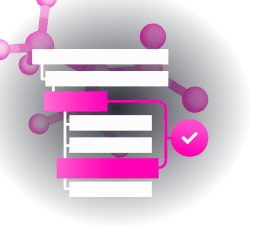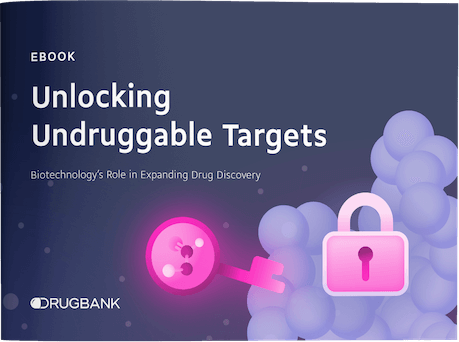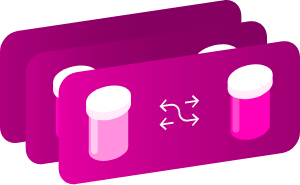Explore a selection of our essential drug information below, or:
Identification
- Generic Name
- 3,4-Epoxybutyl-Alpha-D-Glucopyranoside
- DrugBank Accession Number
- DB02645
- Background
Not Available
- Type
- Small Molecule
- Groups
- Experimental
- Structure
- Weight
- Average: 250.2457
Monoisotopic: 250.10525293 - Chemical Formula
- C10H18O7
- Synonyms
- Not Available
Pharmacology
- Indication
Not Available
 Reduce drug development failure ratesBuild, train, & validate machine-learning modelswith evidence-based and structured datasets.Build, train, & validate predictive machine-learning models with structured datasets.
Reduce drug development failure ratesBuild, train, & validate machine-learning modelswith evidence-based and structured datasets.Build, train, & validate predictive machine-learning models with structured datasets.- Contraindications & Blackbox Warnings
 Prevent Adverse Drug Events TodayTap into our Clinical API for life-saving information on contraindications & blackbox warnings, population restrictions, harmful risks, & more.Avoid life-threatening adverse drug events with our Clinical API
Prevent Adverse Drug Events TodayTap into our Clinical API for life-saving information on contraindications & blackbox warnings, population restrictions, harmful risks, & more.Avoid life-threatening adverse drug events with our Clinical API- Pharmacodynamics
Not Available
- Mechanism of action
Target Actions Organism UBeta-amylase Not Available Bacillus cereus - Absorption
Not Available
- Volume of distribution
Not Available
- Protein binding
Not Available
- Metabolism
- Not Available
- Route of elimination
Not Available
- Half-life
Not Available
- Clearance
Not Available
- Adverse Effects
 Improve decision support & research outcomesWith structured adverse effects data, including: blackbox warnings, adverse reactions, warning & precautions, & incidence rates. View sample adverse effects data in our new Data Library!Improve decision support & research outcomes with our structured adverse effects data.
Improve decision support & research outcomesWith structured adverse effects data, including: blackbox warnings, adverse reactions, warning & precautions, & incidence rates. View sample adverse effects data in our new Data Library!Improve decision support & research outcomes with our structured adverse effects data.- Toxicity
Not Available
- Pathways
- Not Available
- Pharmacogenomic Effects/ADRs
- Not Available
Interactions
- Drug Interactions
- This information should not be interpreted without the help of a healthcare provider. If you believe you are experiencing an interaction, contact a healthcare provider immediately. The absence of an interaction does not necessarily mean no interactions exist.Not Available
- Food Interactions
- Not Available
Categories
- Drug Categories
- Not Available
- Chemical TaxonomyProvided by Classyfire
- Description
- This compound belongs to the class of organic compounds known as o-glycosyl compounds. These are glycoside in which a sugar group is bonded through one carbon to another group via a O-glycosidic bond.
- Kingdom
- Organic compounds
- Super Class
- Organic oxygen compounds
- Class
- Organooxygen compounds
- Sub Class
- Carbohydrates and carbohydrate conjugates
- Direct Parent
- O-glycosyl compounds
- Alternative Parents
- Oxanes / Monosaccharides / Secondary alcohols / Polyols / Oxacyclic compounds / Epoxides / Dialkyl ethers / Acetals / Primary alcohols / Hydrocarbon derivatives
- Substituents
- Acetal / Alcohol / Aliphatic heteromonocyclic compound / Dialkyl ether / Ether / Hydrocarbon derivative / Monosaccharide / O-glycosyl compound / Organoheterocyclic compound / Oxacycle
- Molecular Framework
- Aliphatic heteromonocyclic compounds
- External Descriptors
- Not Available
- Affected organisms
- Not Available
Chemical Identifiers
- UNII
- Not Available
- CAS number
- Not Available
- InChI Key
- RZSIARIQGABJJE-DLXYEPTOSA-N
- InChI
- InChI=1S/C10H18O7/c11-3-6-7(12)8(13)9(14)10(17-6)15-2-1-5-4-16-5/h5-14H,1-4H2/t5-,6+,7+,8-,9+,10-/m0/s1
- IUPAC Name
- (2R,3S,4S,5R,6S)-2-(hydroxymethyl)-6-{2-[(2S)-oxiran-2-yl]ethoxy}oxane-3,4,5-triol
- SMILES
- [H][C@]1(CCO[C@@]2([H])O[C@]([H])(CO)[C@@]([H])(O)[C@]([H])(O)[C@@]2([H])O)CO1
References
- General References
- Not Available
- External Links
- PubChem Compound
- 5288150
- PubChem Substance
- 46506071
- ChemSpider
- 4450375
- ZINC
- ZINC000033821285
- PDBe Ligand
- EBG
- PDB Entries
- 1j12
Clinical Trials
- Clinical Trials
Clinical Trial & Rare Diseases Add-on Data Package
Explore 4,000+ rare diseases, orphan drugs & condition pairs, clinical trial why stopped data, & more. Preview package Phase Status Purpose Conditions Count Start Date Why Stopped 100+ additional columns Unlock 175K+ rows when you subscribe.View sample data
Pharmacoeconomics
- Manufacturers
- Not Available
- Packagers
- Not Available
- Dosage Forms
- Not Available
- Prices
- Not Available
- Patents
- Not Available
Properties
- State
- Solid
- Experimental Properties
- Not Available
- Predicted Properties
Property Value Source Water Solubility 421.0 mg/mL ALOGPS logP -1.9 ALOGPS logP -2.4 Chemaxon logS 0.23 ALOGPS pKa (Strongest Acidic) 12.21 Chemaxon pKa (Strongest Basic) -3 Chemaxon Physiological Charge 0 Chemaxon Hydrogen Acceptor Count 7 Chemaxon Hydrogen Donor Count 4 Chemaxon Polar Surface Area 111.91 Å2 Chemaxon Rotatable Bond Count 5 Chemaxon Refractivity 54.28 m3·mol-1 Chemaxon Polarizability 24.4 Å3 Chemaxon Number of Rings 2 Chemaxon Bioavailability 1 Chemaxon Rule of Five Yes Chemaxon Ghose Filter No Chemaxon Veber's Rule No Chemaxon MDDR-like Rule No Chemaxon - Predicted ADMET Features
Property Value Probability Human Intestinal Absorption - 0.9108 Blood Brain Barrier + 0.5719 Caco-2 permeable - 0.7947 P-glycoprotein substrate Non-substrate 0.5113 P-glycoprotein inhibitor I Non-inhibitor 0.8839 P-glycoprotein inhibitor II Non-inhibitor 0.933 Renal organic cation transporter Non-inhibitor 0.8192 CYP450 2C9 substrate Non-substrate 0.8701 CYP450 2D6 substrate Non-substrate 0.8509 CYP450 3A4 substrate Non-substrate 0.6444 CYP450 1A2 substrate Non-inhibitor 0.9142 CYP450 2C9 inhibitor Non-inhibitor 0.8762 CYP450 2D6 inhibitor Non-inhibitor 0.9273 CYP450 2C19 inhibitor Non-inhibitor 0.8676 CYP450 3A4 inhibitor Non-inhibitor 0.9745 CYP450 inhibitory promiscuity Low CYP Inhibitory Promiscuity 0.9719 Ames test Non AMES toxic 0.6211 Carcinogenicity Non-carcinogens 0.963 Biodegradation Not ready biodegradable 0.6765 Rat acute toxicity 1.8232 LD50, mol/kg Not applicable hERG inhibition (predictor I) Weak inhibitor 0.8579 hERG inhibition (predictor II) Non-inhibitor 0.8025
Spectra
- Mass Spec (NIST)
- Not Available
- Spectra
Spectrum Spectrum Type Splash Key Predicted GC-MS Spectrum - GC-MS Predicted GC-MS splash10-053i-9630000000-55ac183926f1ce199d55 Predicted MS/MS Spectrum - 10V, Positive (Annotated) Predicted LC-MS/MS splash10-0f6t-2960000000-06c2828eca346d794060 Predicted MS/MS Spectrum - 10V, Negative (Annotated) Predicted LC-MS/MS splash10-0002-3890000000-6f758e823347f2690a64 Predicted MS/MS Spectrum - 20V, Positive (Annotated) Predicted LC-MS/MS splash10-0ac0-9670000000-c0d836966da152fb191a Predicted MS/MS Spectrum - 20V, Negative (Annotated) Predicted LC-MS/MS splash10-054t-9240000000-40839200630dc974d4f6 Predicted MS/MS Spectrum - 40V, Positive (Annotated) Predicted LC-MS/MS splash10-000j-9100000000-035e9e86bd15640765f8 Predicted MS/MS Spectrum - 40V, Negative (Annotated) Predicted LC-MS/MS splash10-0006-9000000000-709dd79e5b0aea53841b Predicted 1H NMR Spectrum 1D NMR Not Applicable Predicted 13C NMR Spectrum 1D NMR Not Applicable - Chromatographic Properties
Collision Cross Sections (CCS)
Adduct CCS Value (Å2) Source type Source [M-H]- 150.24384 predictedDeepCCS 1.0 (2019) [M+H]+ 152.18869 predictedDeepCCS 1.0 (2019) [M+Na]+ 158.10121 predictedDeepCCS 1.0 (2019)
Targets

Build, predict & validate machine-learning models
Use our structured and evidence-based datasets to unlock newinsights and accelerate drug research.
Use our structured and evidence-based datasets to unlock new insights and accelerate drug research.
- Kind
- Protein
- Organism
- Bacillus cereus
- Pharmacological action
- Unknown
- General Function
- Not Available
- Specific Function
- amylopectin maltohydrolase activity
- Gene Name
- spoII
- Uniprot ID
- P36924
- Uniprot Name
- Beta-amylase
- Molecular Weight
- 61628.585 Da
References
Drug created at June 13, 2005 13:24 / Updated at August 01, 2020 13:44


